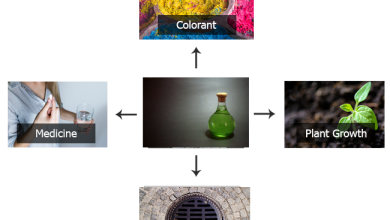List of 30 Tropical and Exotic Fruits: [Images and Characteristics]
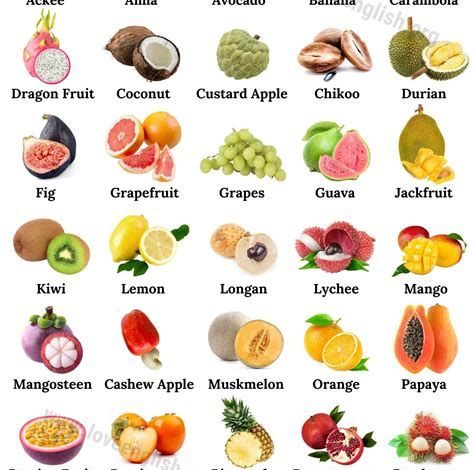
I love fruits. Usually. But I have a special weakness for tropical fruits.
It’s relatively recently that I discovered avocado or mango and have planted both trees in my orchard. Plus, when they’re in season, I ALWAYS buy them.
In this article we are going to show you a list of the main and most famous tropical fruits that you can eat and/or plant in your garden. In addition, we will add a short description of its features.
You sign up?
What are tropical fruits?
Tropical fruit is any fruit produced by a tree native to the tropics.
The tropics are generally defined as the region of the globe situated between the Tropic of Cancer and the Tropic of Capricorn, and the environmental conditions there are unique, creating a habitat for incredibly diverse animals and plants.
Many tropical fruits have been used by humans for centuries, and certain fruits are in high demand around the world.
Some tropical fruits are quite well known throughout the world.
Pomegranates, mangoes, papayas, avocados, bananas, pineapples, guavas, star fruits, kiwis, dates, and passion fruit are some well-known examples.
In fact, the banana is one of the best-selling fruits in the world, thanks to the ease with which it can be grown, harvested and transported. Many of these fruits are available in large markets throughout the year, thanks to the constant supply of fruit from the tropics.
papaya
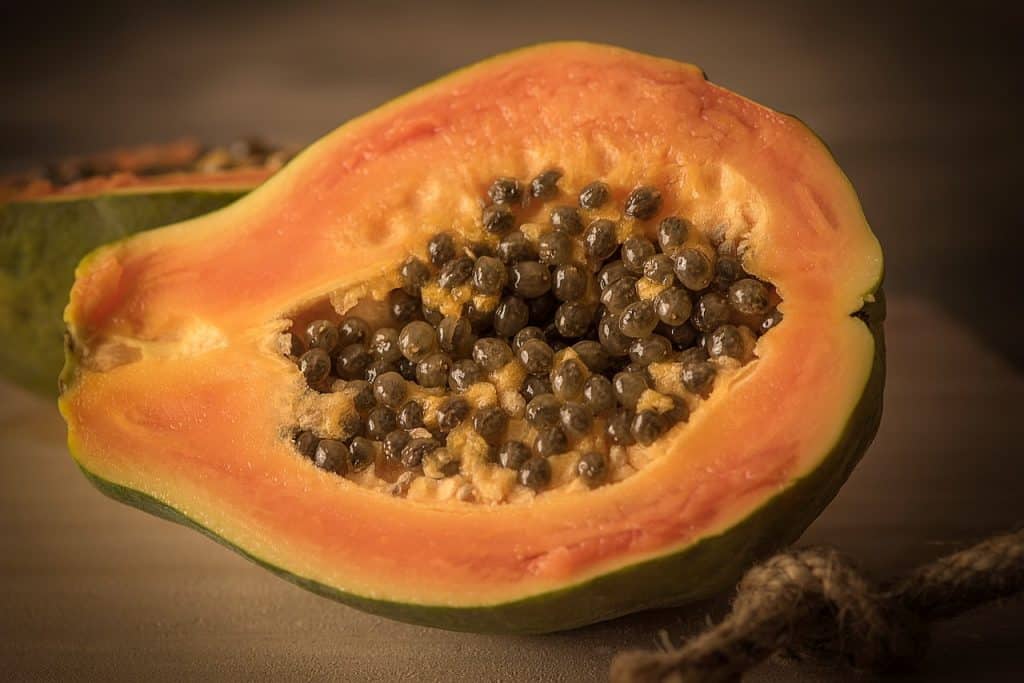
Christopher Columbus called papaya the «fruit of angels» and rightly so.
Papaya is sweet and succulent, and also offers numerous health benefits. Packed with antioxidants and flavonoids, plus loads of vitamins and minerals, it’s one of nature’s healthiest fruits.
- To know more: How to plant a Papaya tree
The Lucuma
According to Peruvians, most people do not eat this tropical fruit directly, but they greatly enjoy its flavor by adding it to other foods. The texture of the lacuma is not very pleasant, from what we understand, but it is very sweet!
They put it in cakes, pies, puddings, ice cream and other sweets.
Pacay
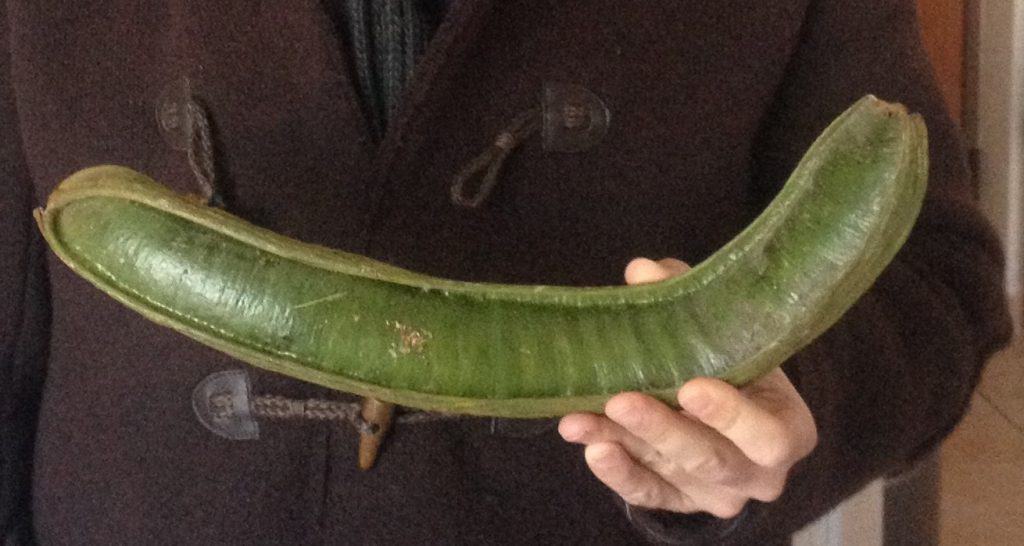
The pacay, pacae, jinicuil or guaba, Inga feuilleei. These trees that bear these tropical fruits grow up to 18 meters in height and produce elongated, cylindrical pods that hang from the branches.
The dark green pods vary in size, averaging 3 to 30 centimeters in length, and can be straight or slightly curved, with a thick, leathery consistency.
Inside the pod, a white, cotton-like pulp with a spongy texture encloses multiple smooth black seeds. The number of seeds varies depending on the size of the pod, with the large ones holding up to 20 seeds.
The white, chewy flesh of the Pacay fruit is edible when fresh and has a subtly sweet flavor reminiscent of vanilla.
The black seeds are inedible raw and must be cooked before consumption, developing a mild nutty flavor.
Squash
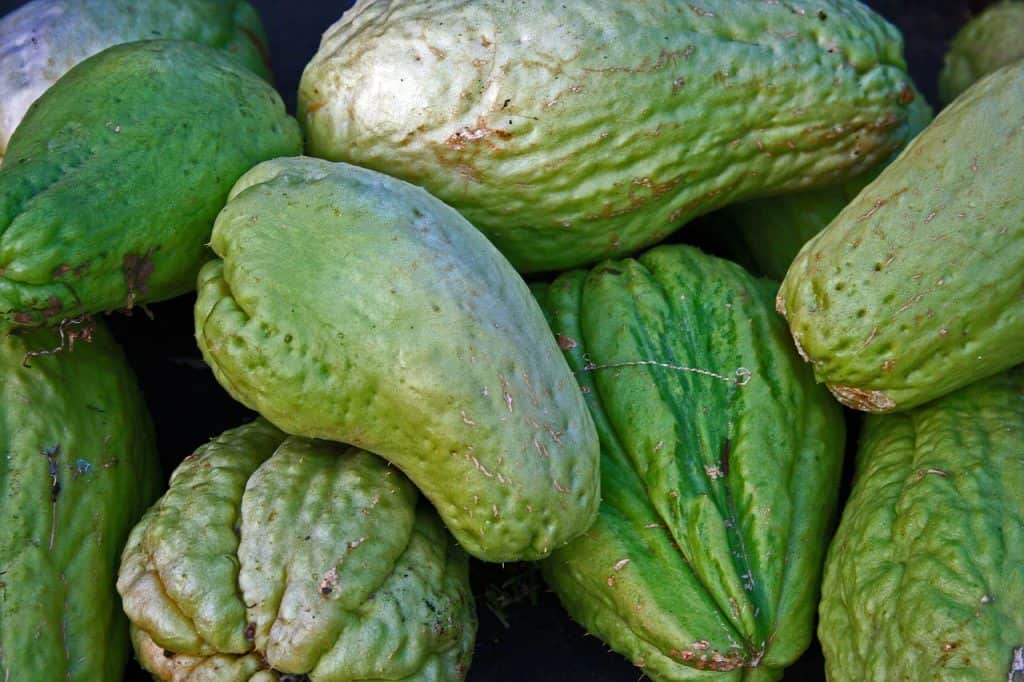
Chayote (Sechium edule), also known as mirliton (British English), choko, tayota, chocho (Jamaica), and chuchu (Brazil), is an edible plant belonging to the gourd family, Cucurbitaceae.
Chayote was one of several foods introduced to the Old World during the Columbian Exchange. Also during this period, the plant spread from Mesoamerica to other parts of the Americas, making it part of the cuisine of many other Latin American nations.
The tropical fruit of the chayote is mainly used cooked.
When cooked, chayote is usually handled like summer squash; it is usually lightly cooked to preserve its crispy consistency.
Raw chayote can be added to salads or sauces, usually marinated in lemon or lime juice, but is often considered particularly unpleasant and tough in texture. Both raw and cooked, chayote is a good source of vitamin C.
Persimmons
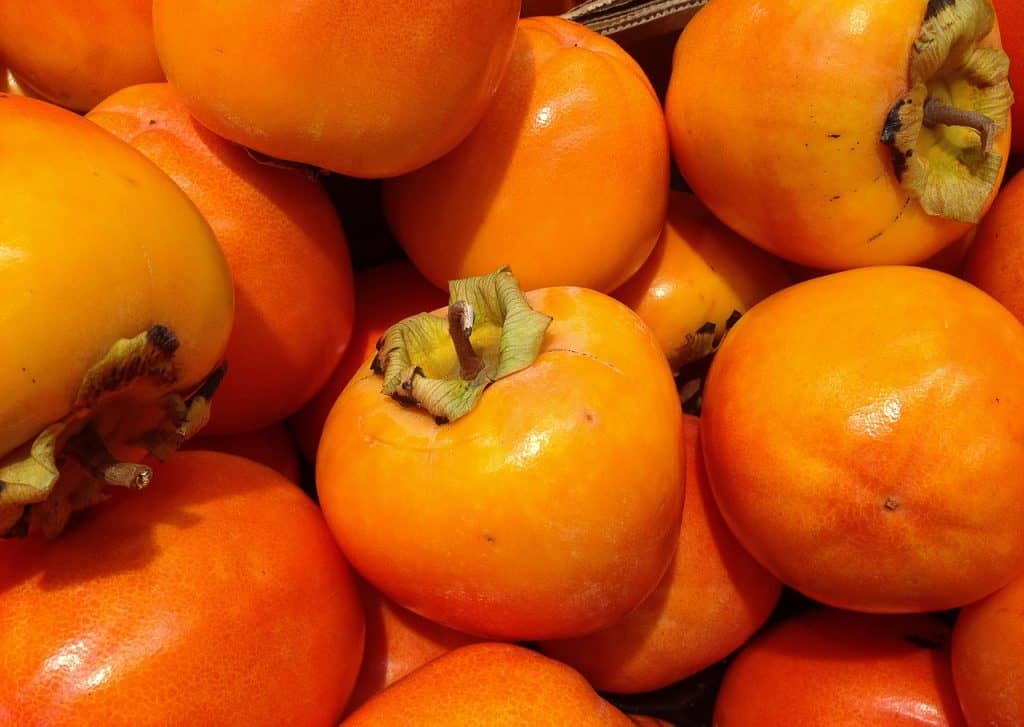
Persimmon is the edible fruit of several species of trees in the genus Diospyros.
The most widely cultivated of these is the eastern persimmon, Diospyros kaki.
The persimmon is a tropical fruit belonging to the family Ebenaceae, and several species of the genus that are not persimmons are cultivated for ebony wood. In 2019, China produced 75% of the world’s total persimmons.
Compared to apples, persimmons have higher levels of dietary fiber and some dietary minerals, but are generally not a significant source of micronutrients, with the exception of manganese (17% of the Daily Value, DV) and provitamin A beta- carotene (10% DV, table of raw Japanese persimmons per 100 gram quantity).
In a 100 gram quantity, raw American persimmons are a rich source of vitamin C (80% DV) and iron (19% DV).
Persimmon fruits contain phytochemicals, such as catechin, gallocatechin, and betulinic acid.
To know more: How to grow persimmons.
durian
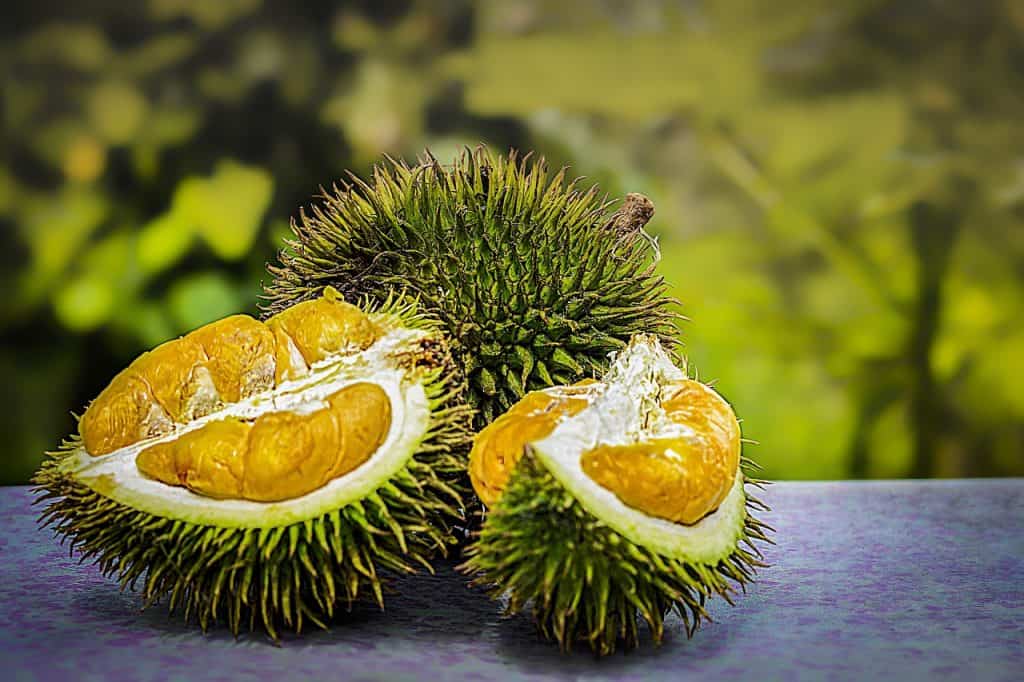
The durian is the fruit of several species of trees belonging to the genus Durio.
There are 30 recognized species of Durio, of which at least nine produce edible tropical fruits, with over 300 named varieties in Thailand and 100 in Malaysia, since 1987 Durio zibethinus is the only species available on the international market: the other species are sold in their local regions. It is native to Borneo and Sumatra.
Known in some regions as the «king of fruits», the durian is distinguished by its large size, its strong smell and its bark covered with thorns. The fruit can reach 30 centimeters in length and 15 in diameter, and usually weighs between 1 and 3 kilograms. Its shape varies from oblong to round, the color of its shell from green to brown, and its flesh from pale yellow to red, depending on the species.
Some people find durian to have a pleasantly sweet fragrance, while others find its aroma to be overpowering, with an unpleasant odor.
The smell causes reactions ranging from deep appreciation to intense disgust, and has been described as rotting onions, white spirit, and sewage. The persistence of its smell, which can last for several days, has led some hotels and public transport services in Southeast Asia to ban the fruit.
However, the 19th-century British naturalist Alfred Russel Wallace described its flesh as «a rich custard heavily flavored with almonds. «
The pulp can be eaten at various stages of ripeness and is used to flavor a wide variety of savory and sweet desserts in Southeast Asian cuisines. The seeds can also be consumed cooked.
Grapefruit
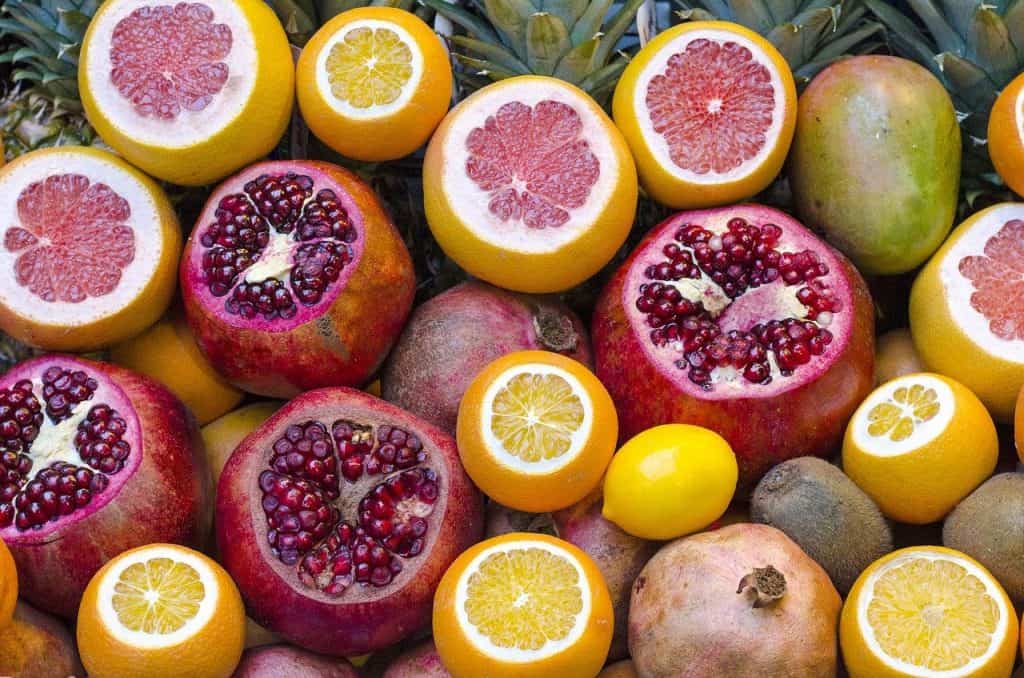
The grapefruit or in scientific terms Citrus maxima or Citrus grandis, is the largest citrus fruit of the Rutaceae family and the main ancestor of the grapefruit.
It is a natural citrus, that is, not a hybrid, originally from Southeast Asia.
Tasting similar to sweet pomelo, pomelo is commonly eaten and used on festive occasions throughout Southeast Asia. Like grapefruit, grapefruit has the potential to interact with medications.
Raw grapefruit pulp is 89% water, 10% carbohydrates, 1% protein and negligible fat. In 100 grams it provides 38 calories, and is rich in vitamin C (73% of the daily value), without any other significant micronutrient content.
kumquats
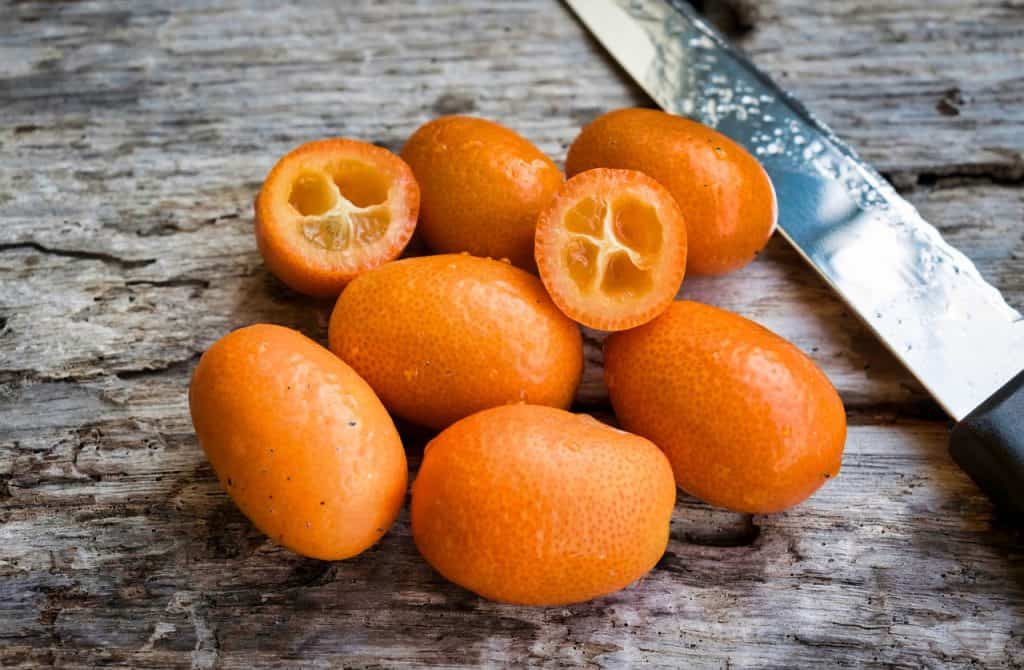
Kumquats are perennial plants and belong to the Fortunella genus, from and to the Rutaceae family where there are 4 species of small trees and shrubs originating from Japan and China.
The four species of kumquats are: Fortunella japonica, Fortunella hindsii, Fortunella polyandria, Fortunella margarita. The plant gets its name as a tribute to the 19th-century Scottish botanist Robert Fortune.
The common names of kumquats are: dwarf orange, Chinese orange, Japanese orange, kumquat, Cumquat or Quinoto.
Kumquats are the smallest fruit of the types of citrus that exist. They are also called dwarf orange trees and are shaped like small bushes.
- To know more: How to grow kumquats.
Kiwi
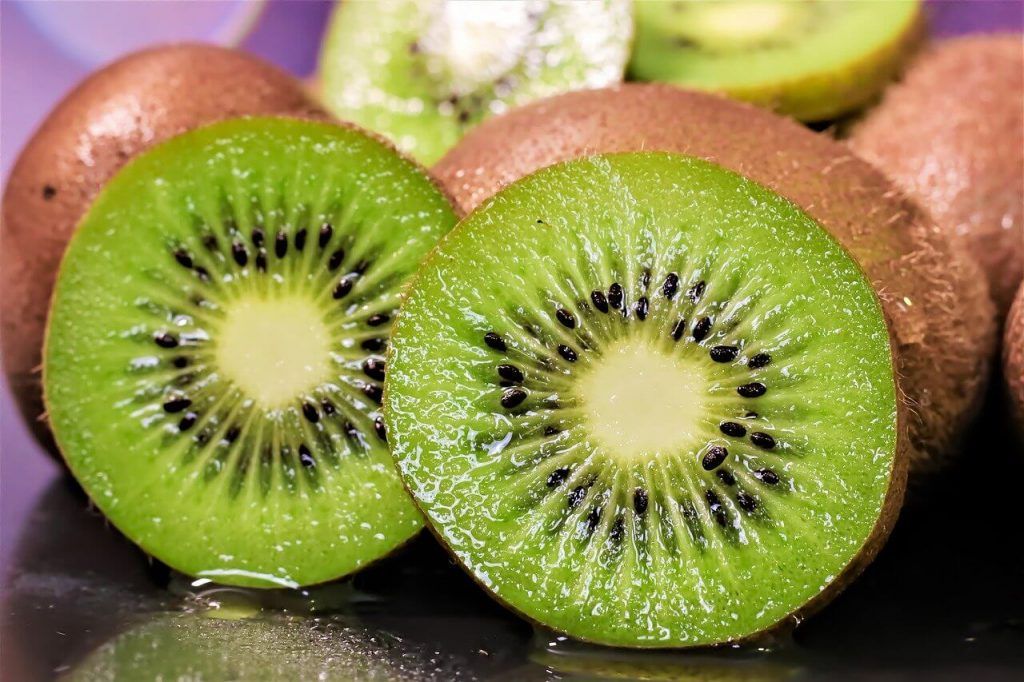
The kiwi is the edible berry of several species of woody vines of the genus Actinidia.
The most common cultivar group of kiwi is oval, about the size of a large chicken egg: 5-8 centimeters in length and 4.5-5.5 cm in diameter.
It has a thin, fuzzy, fibrous, tangy but edible light brown skin, and a light green or golden flesh with rows of small edible black seeds.
The fruit has a smooth texture with a sweet and unique flavor. In 2018, China produced half of the world’s total kiwifruit.
The kiwi is native to central and eastern China.
The first recorded description of the kiwi dates back to the 12th century, during the Song dynasty. In the early 20th century, kiwi cultivation spread from China to New Zealand, where the first commercial plantations were produced.
The fruit became popular with British and American servicemen stationed in New Zealand during World War II, and was later commonly exported, first to Britain and then to California in the 1960s.
To know more:
Cannon
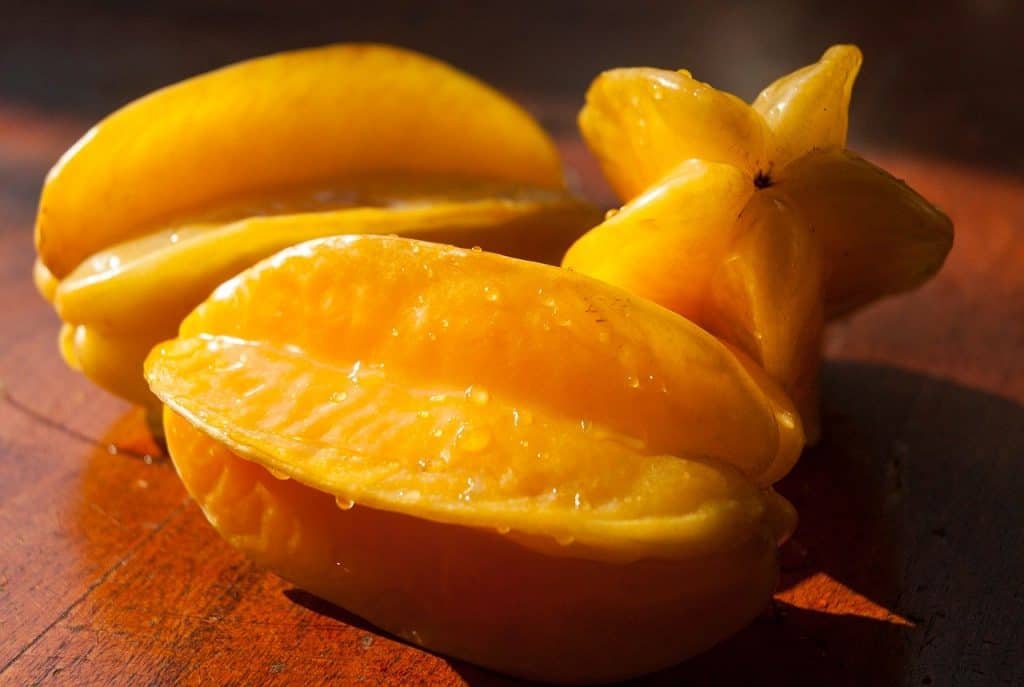
Carambola, also known as star fruit or carambola, is the fruit of the Averrhoa carambola, a species of tree native to tropical Southeast Asia.
The fruit is commonly eaten in parts of Brazil, Southeast Asia, South Asia, the South Pacific, Micronesia, parts of East Asia, and the Caribbean. The tree is cultivated in all tropical areas of the world.
The fruit has distinctive ridges running down its sides (usually 5-6). When cut in cross section, it resembles a star, giving it the name star fruit.
Toda la fruta es comestible, normalmente cruda, y puede cocinarse o hacerse en condimentos, conservas, guarniciones y zumos.
Aguacate
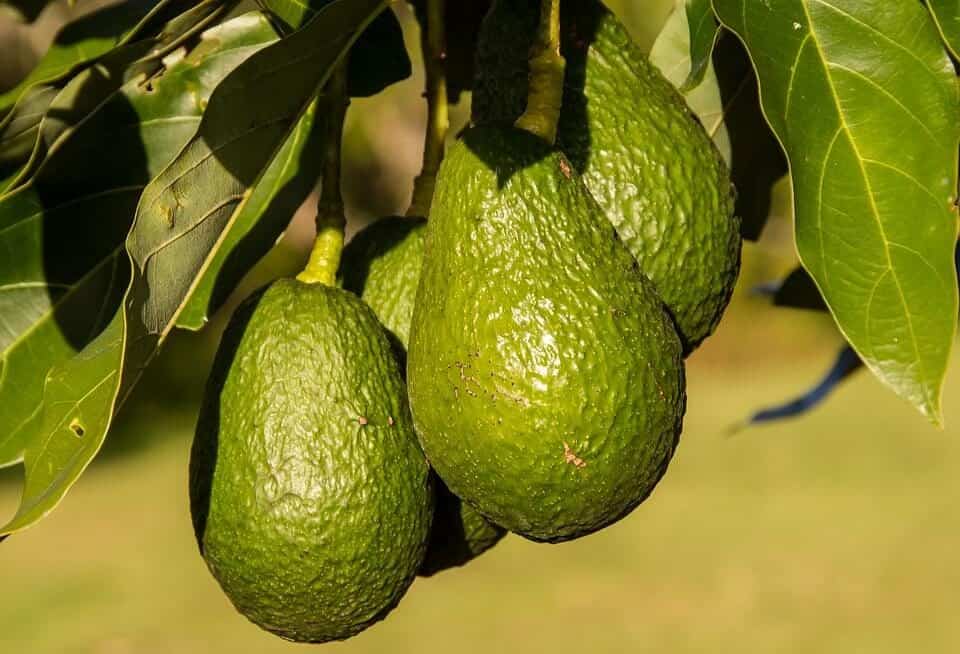
Seguro que conocesel aguacate.Y seguro que si tienes un trozo de tierra, un pequeño huerto o unhuerto urbano se te ha pasado por la cabeza sembrarlo ¿No es así?
El aguacatepuede considerarse uno de las frutas (que muchos tratamos como vegetal) más versátiles, deliciosas y beneficiosas que existen.
Su popularidad ha crecido mucho en las últimas décadas, especialmente en la industria del bienestar, la belleza y el fitness, que lo mantienen como uno de sus grandes aliados para lograr teneruna vida más longeva y saludable.
El aguacate ha encontrado su lugar enla comida mediterráneay europea en general, así como también en los platos típicos sudamericanos, caribeños y en algunos países de Asia, como Japón.
Su textura cremosa y su suave sabor lo hacen del gusto de muchos, y le han dado la facilidad de estar presente tanto en preparaciones dulces como saladas.
Para saber más:
- Cómo sembrar aguacates.
- 8 Tipos y Variedades de Aguacates más Famosas
- Cómo Abonar Aguacates: [Métodos, Fechas y Componentes a Usar]
- Cómo Podar un Aguacatero: [Guía sobre la Poda del Árbol de Aguacates]
Kiwano
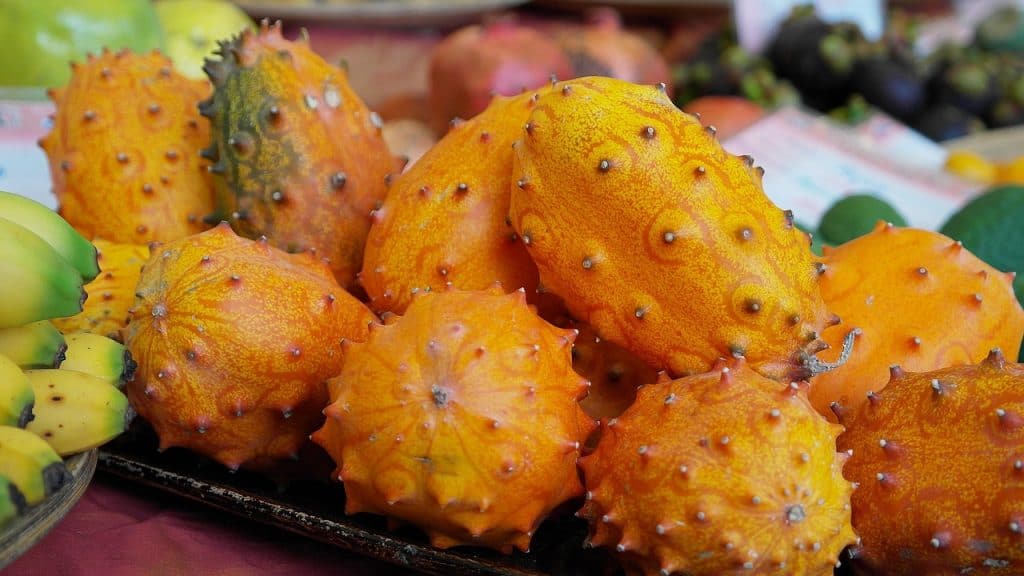
El Cucumis metuliferus, comúnmente llamado pepino africano con cuernos, melón con cuernos, melón con púas, melón de gelatina, kiwano o cuke-a-saurus es una enredadera anual de la familia de los pepinos y melones, Cucurbitaceae.
Su fruto tiene espinas en forma de cuerno, de ahí el nombre de «melón con cuernos». La fruta madura tiene la piel anaranjada y la pulpa gelatinosa de color verde lima, con un refrescante sabor afrutado y una textura similar a la del maracuyá o la granada.
El kiwano es originario del África subsahariana y actualmente se cultiva en Estados Unidos, Portugal, Italia, Alemania, Chile, Australia y Nueva Zelanda.
El kiwano es una planta comestible tradicional en África. Junto con el pepino Gemsbok (Acanthosicyos naudinianus) y el Tsamma (melón cítrico), es una de las pocas fuentes de agua durante la estación seca en el desierto del Kalahari.
En el norte de Zimbabue se llama gaka o gakachika, y se utiliza principalmente como tentempié o ensalada, y rara vez como decoración. Puede comerse en cualquier fase de maduración, pero cuando está demasiado madura, estalla con fuerza para liberar las semillas.
El sabor de la fruta se ha comparado con una combinación de plátano y maracuyá o con una combinación de plátano, pepino y lima. Al probarla por primera vez en directo en 1987, David Letterman la describió como «horrorosamente mala».
Una pequeña cantidad de sal o azúcar puede aumentar el sabor, pero el contenido de semillas puede hacer que comer la fruta sea menos conveniente que muchas frutas comunes.
Algunas personas también se comen la cáscara, que es muy rica en vitamina C y fibra dietética.
Maracuyá
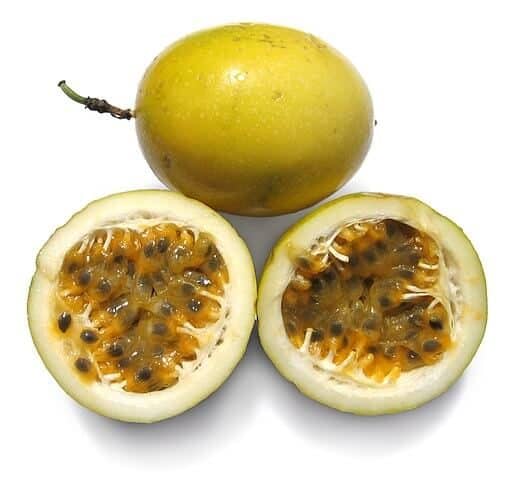
Su popularidad en el mundo se debe a sufruto, que también es llamado fruta de la pasión, cuyo contenido es jugoso, consemillasy un rico sabor ácido.
Además, puede utilizarse con finesdecorativos y hasta sembrarse en macetas, por lo que la podrás tener en casa sin inconvenientes
La maracuyáes una planta de tallo fuerte que crece con un método trepador, no recto desde un tronco como en el caso delnaranjo.
Sus hojas sonperennesy el color característico es unverdevibrante en toda la estructura, con textura lisa.
Al culminar la siembra, puede dar su primera cosecha unos 6 meses después. Sin embargo, su tiempo de vida aproximado es de 10 años.
Para saber más: Cómo sembrar Maracuyá.
Plátano
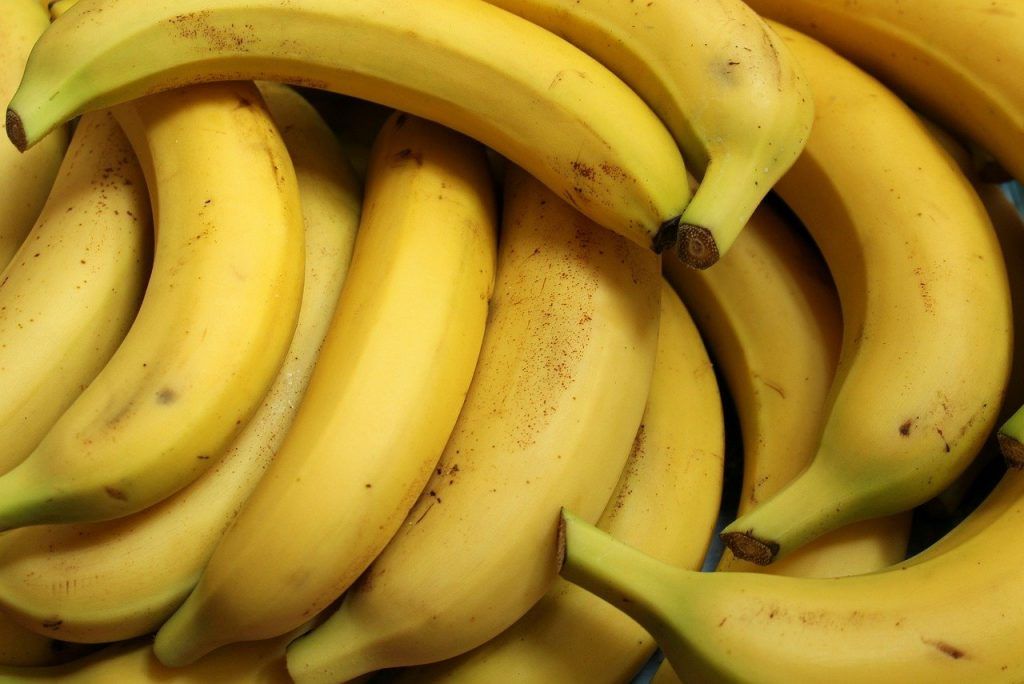
El plátano es una fruta alargada y comestible, botánicamente es considerado una baya, producida por varios tipos de grandes plantas herbáceas con flores del género Musa.
El fruto varía en tamaño, color y firmeza, pero suele ser alargado y curvado, con una pulpa blanda y rica en almidón cubierta por una corteza que puede ser verde, amarilla, roja, púrpura o marrón cuando está madura.
Los frutos crecen en racimos que cuelgan de la parte superior de la planta. Casi todos los plátanos modernos sin semillas (partenocarpios) provienen de dos especies silvestres: Musa acuminata y Musa balbisiana.
Las especies de Musa son nativas de Indomalaya tropical y Australia, y es probable que hayan sido domesticadas por primera vez en Papúa Nueva Guinea.
Se cultivan en 135 países, principalmente por su fruta, y en menor medida para hacer fibra, vino de plátano y cerveza de plátano y como plantas ornamentales. Los mayores productores de plátanos del mundo en 2017 fueron India y China, que juntos representaron aproximadamente el 38% de la producción total.
Mano de Buda
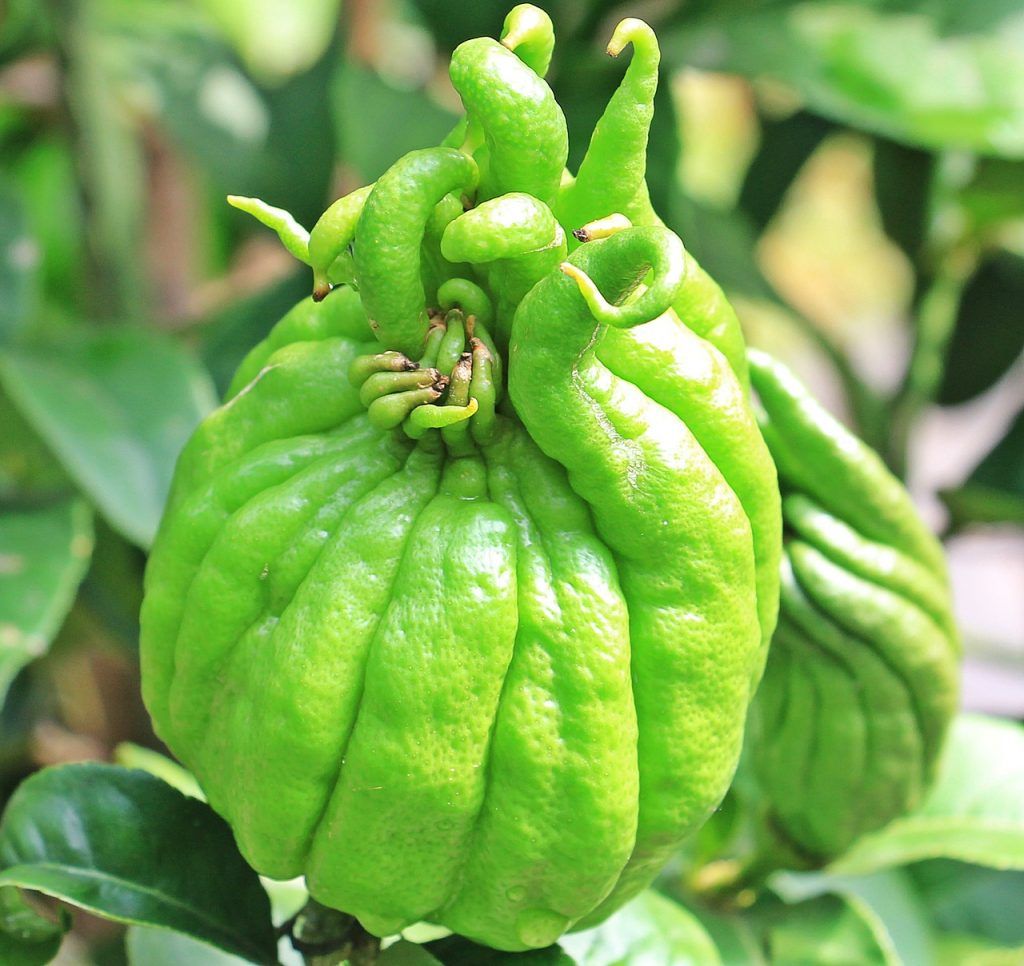
Citrus medica var. sarcodactylis, cidra de los dedos o mano de Buda, es una variedad de cidra de forma inusual cuyo fruto está segmentado en secciones parecidas a dedos, que se asemejan a los que se ven en las representaciones de Buda.
Se llama mano de Buda en chino (佛手柑), japonés (仏手柑), coreano (불수감; 佛手柑) y francés (main de Buddha).
Los diferentes variedades de cidra forman un gradiente que va desde los tipos de «mano abierta» con segmentos desplegados hacia fuera hasta los de «mano cerrada», en los que los dedos se mantienen juntos.
También hay frutos de medio dedo, en los que la parte basal está unida y la apical tiene dedos. El origen de este tipo de cítricos se suele situar en el sur o el este de Asia, probablemente en el noreste de la India o en China, donde se originan la mayoría de los cítricos domesticados.
Chirimoya
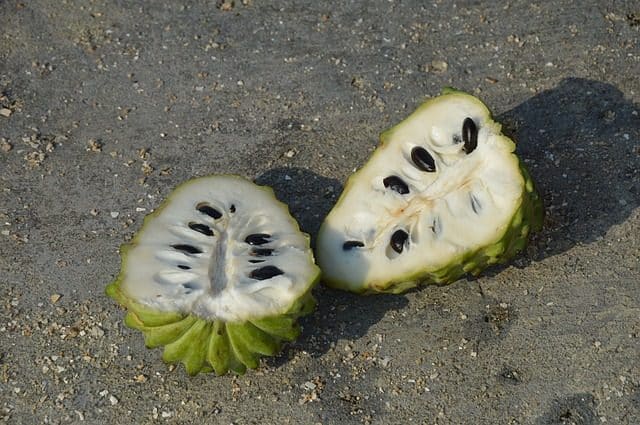
La chirimoya (Annona cherimola), también deletreada chirimoya y llamada chirimuya por el pueblo inca, es una especie de planta frutal comestible del género Annona, de la familia Annonaceae, que incluye a las estrechamente relacionadas chirimoya y guanábana.
Durante mucho tiempo se creyó que la planta era originaria de Colombia, Ecuador, Perú, Bolivia y Chile, y que se cultivaba en los Andes y en América Central, aunque una hipótesis reciente postula que el origen es América Central, ya que muchos de los parientes silvestres de la planta se encuentran en esta zona.
La chirimoya se cultiva en regiones tropicales de todo el mundo, así como en España, sobre todo en las provincias del sur de Granada y Málaga, donde se consume ampliamente. También se cultiva en Calabria, en el sur de Italia.
El escritor estadounidense Mark Twain llamó a la chirimoya «la fruta más deliciosa conocida por el ser humano». La textura cremosa de la pulpa da a la fruta su nombre secundario, la chirimoya.
- Para saber más: Cómo sembrar un árbol de chirimoyas
Fruta de la Jaca
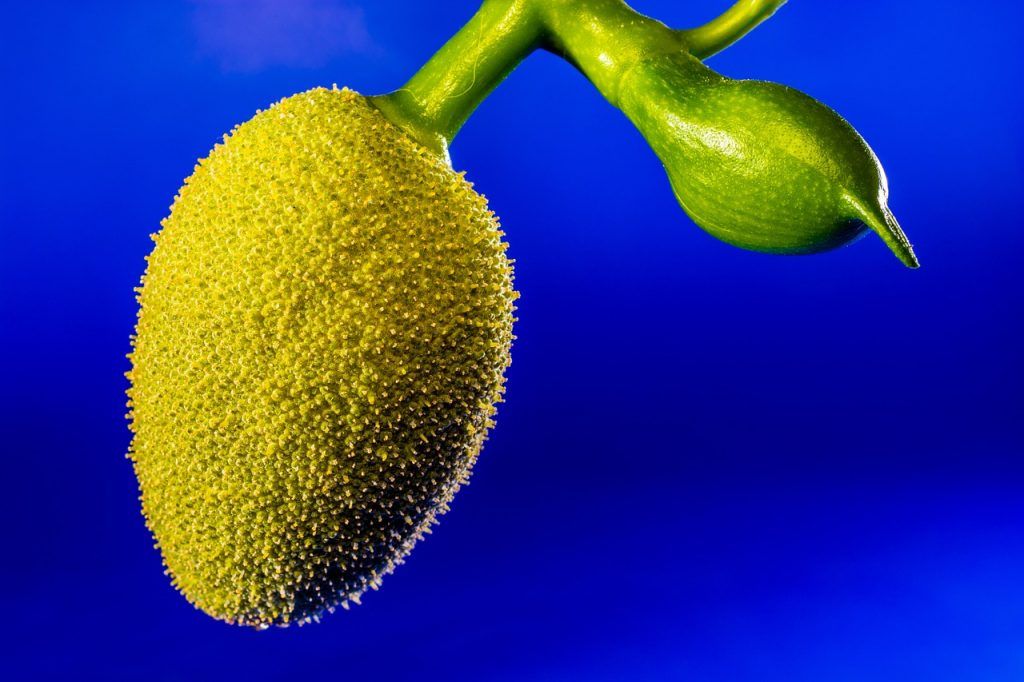
Se trata de una fruta tropical que se produce sobre todo en Vietnam y Tailandia, con un sabor que recuerda a una mezcla de otras frutas, como el plátano, el mango y la piña.
The flavor is also sometimes described as similar to that of Juicy Fruit gum. The fruit is also high in B vitamins, potassium and protein, making it an especially healthy but highly underutilized crop.
Jackfruit or Cempedak
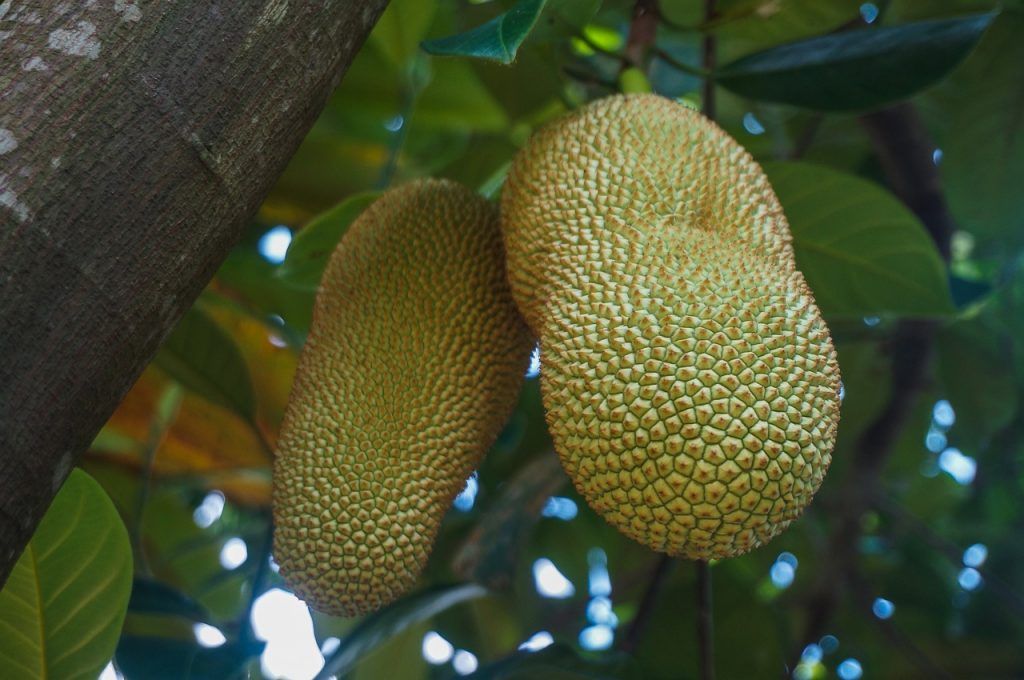
The cempedak or jackfruit is a close relative of the Jaca or Jackfruit fruit, and the interior structure of the two fruits is similar. The individual pieces of flesh can be eaten as is, and the flesh is a less sweet version of the jackfruit.
The fruit also has a very strong odor and can be smelled from quite a distance. Cempedak should be opened carefully as it releases a sticky juice that needs to be removed with an oil-based product.
lychee
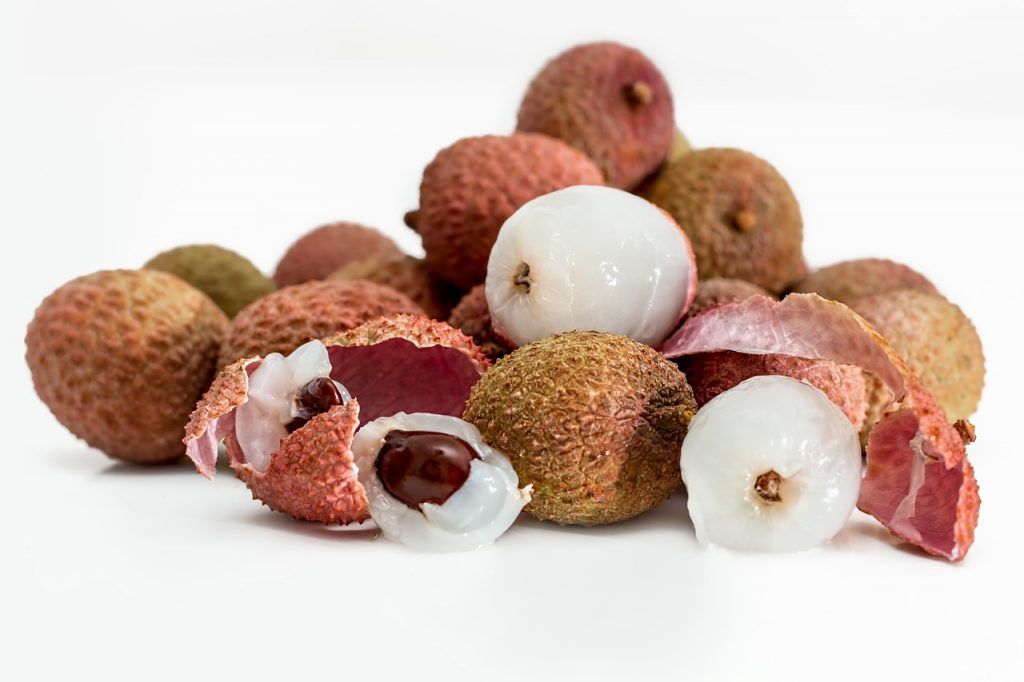
Lychee is a sweet summer tropical fruit that belongs to the soapberry family. The outer rind of the fruit is not edible, but is easily removed to allow access to the white pulp inside.
The fruit is known for its floral aroma, although this is lost when canned, making fresh fruit a more popular choice. Lychees are also common in various desserts.
Medlar
The loquat resembles an apricot and, like this, the yellow part of the fruit is what is eaten.
Loquats flower in autumn or early winter and the fruits ripen in winter or early spring.
The fruit is best picked when it is completely yellow, but before it starts to turn orange, as the yellow phase is where the flavor is most intense.
The fruit also has a very thin skin, which can be removed. However, removing the skin can be challenging and messy, which is why most people skip it and eat it anyway.
mangosteen
Mangosteen (Garcinia mangostana), also known as purple mangosteen, is a tropical evergreen tree with edible fruit native to the island nations of Southeast Asia and Thailand (Thai: มังคุด).
Its origin is uncertain due to its extensive prehistoric cultivation. It grows mainly in Southeast Asia, Southwest India, and other tropical areas such as Colombia, Puerto Rico, and Florida, where the tree has been introduced.
The tree grows from 6 to 25 meters in height. The mangosteen fruit is sweet and sour, juicy, somewhat stringy, with fluid-filled vesicles (like citrus flesh), with an inedible deep reddish-purple rind (exocarp) when ripe.
In each fruit, the edible and fragrant flesh that surrounds each seed is botanically the endocarp, that is, the inner layer of the ovary. The seeds are almond shaped and sized.
handles
The mango is a tropical fruit produced by numerous species of tropical trees belonging to the flowering plant genus Mangifera, which are grown primarily for their edible fruit.
The mango is one of the most consumed tropical fruits in the world.
Most of these species are found in nature as wild mangoes. The genus belongs to the family Anacardiaceae.
Mangoes originate from South Asia, from where the «common mango» or «Indian mango», Mangifera indica, has spread throughout the world to become one of the most widely cultivated fruits in the tropics.
Other Mangifera species (for example, horse mango, Mangifera foetida) are cultivated more locally.
En todo el mundo existen varios cientos de variedades de mango. Dependiendo del cultivar, la fruta del mango varía en tamaño, forma, dulzura, color de la piel y color de la pulpa, que puede ser amarillo pálido, dorado o anaranjado.
El mango es la fruta nacional de India y Pakistán, y el árbol nacional de Bangladesh.
Monstera deliciosa
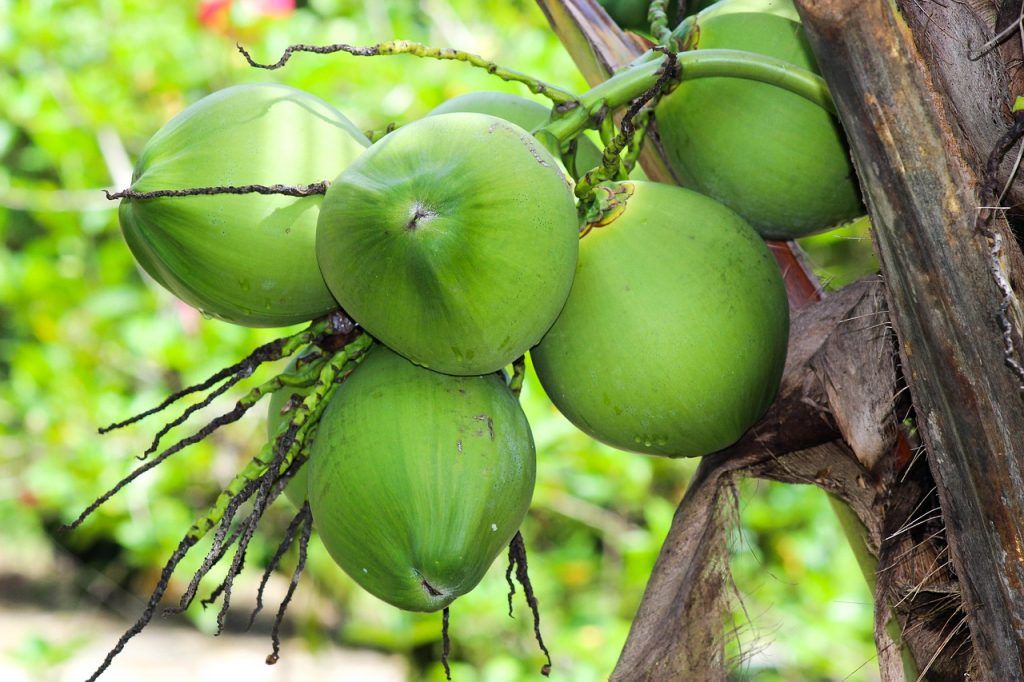
Monstera deliciosa, la planta del queso suizo, es una especie de planta con flor nativa de los bosques tropicales del sur de México, al sur de Panamá.
Se ha introducido en muchas zonas tropicales, y se ha convertido en una especie ligeramente invasora en Hawai, las Seychelles, la isla Ascensión y las islas de la Sociedad. Se cultiva mucho en zonas templadas como planta de interior.
The plant can be confused with the Thaumatophyllum bipinnatifidum, known as the split-leaf philodendron or tree philodendron, as they

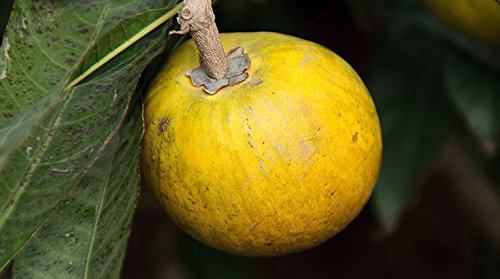
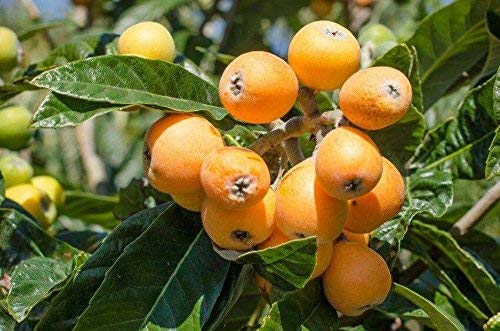
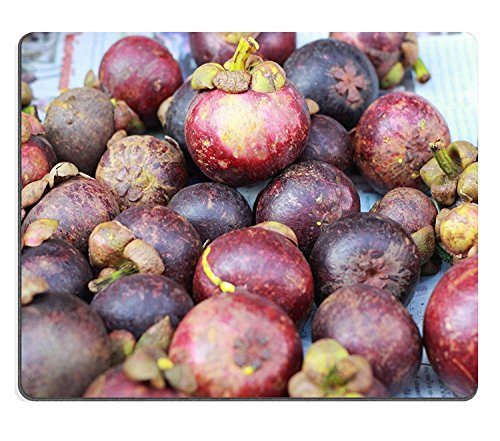
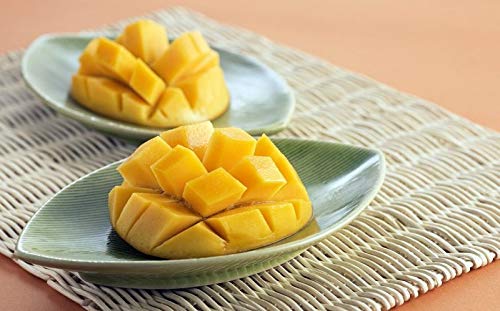

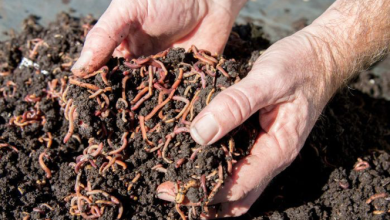
![Photo of Winter Cuttings: [Types, Sowing and Species]](https://www.complete-gardening.com/wp-content/uploads/2022/08/winter-cuttings-types-sowing-and-species-390x220.jpg)
